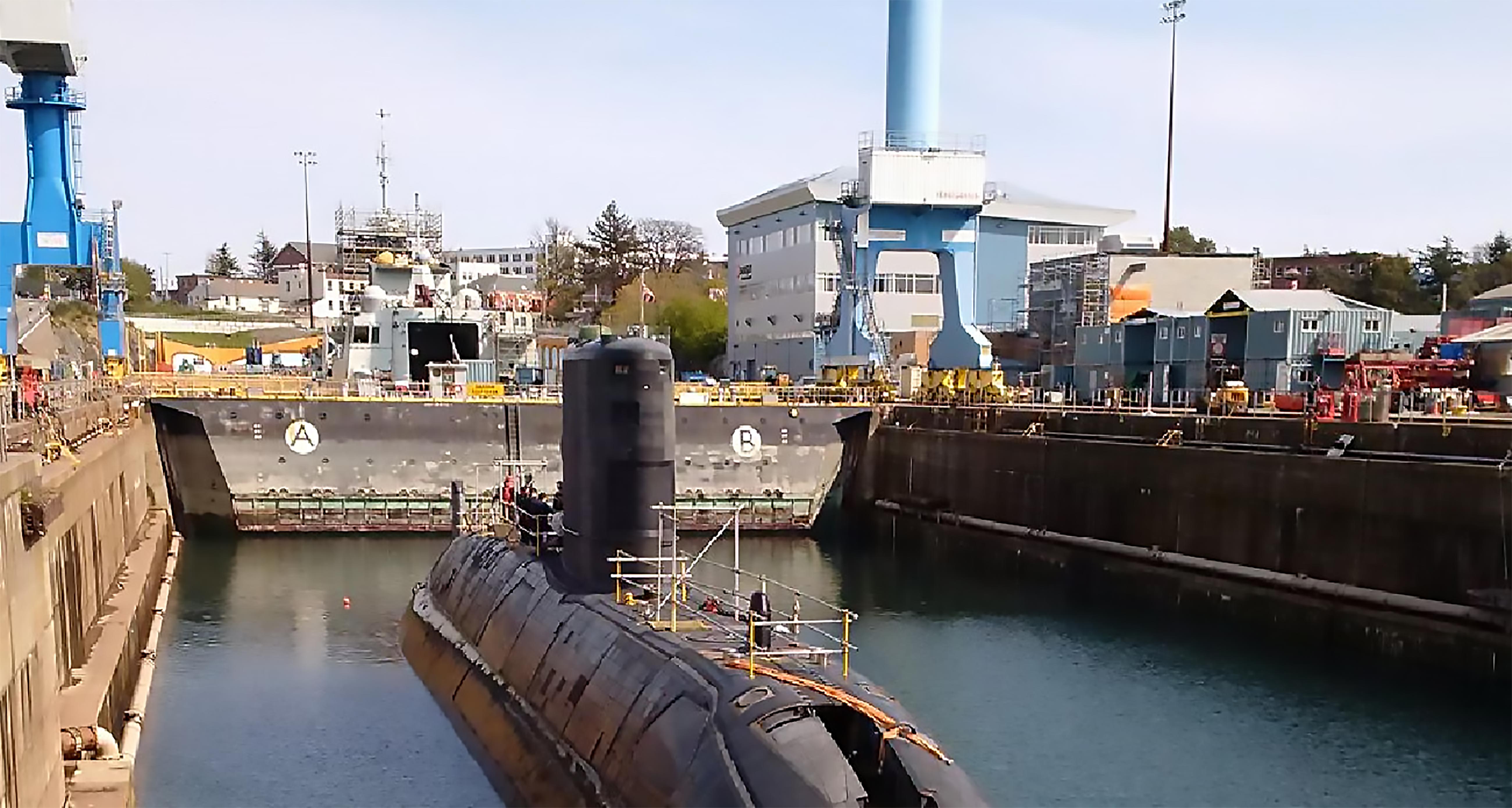Background
In early March 2017, HMCS CHICOUTIMI was preparing to undertake a busy operational schedule. During work-ups, a defect was identified below the waterline in one of her main ballast tanks, which are used to adjust submarine buoyancy.
The crew, in conjunction with the Fleet Maintenance Facility engineers, quickly determined that the defect would need to be addressed. In order to ensure the vessel’s performance and enable it to meet its operational schedule, an unscheduled docking would be needed as soon as possible.
Normally, this type of repair would have been undertaken at the Royal Canadian Navy’s (RCN) in-house repair facility but its dock was occupied by another vessel – flexibility was required, therefore alternate options had to be explored.
Solution
The enabling nature of the Victoria-class In-Service Support Contract (VISSC) was used to create an integrated project team, composed of the RCN Fleet Maintenance Facility, and a Babcock Canada-led Industry team.
By enlisting Babcock Canada, DND was able to leverage a team of experienced submarine maintenance professionals who have docked dozens of submarines, ranging in size from 2,400 t through 16,000 t in a variety of unique facilities.
Once engaged, Babcock Canada and DND worked closely to establish responsibilities, resulting in the novel accountability assignment shown in the diagram below. This stressed the need to balance the performance and value for money considerations.

Result
Time from tasking to dock down: 25 days
Time from defect identification to return to operations: 45 days
Submarine dockings are complex evolutions that require coordination across dozens of stakeholders. Compounding that challenge in this case was the need to undertake a straightforward repair and additional inspection by another organization. Given that most dockings are planned over many months, the timeline below highlights the significant success of this task.


